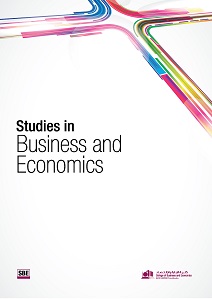Some Determinants of Student Performance in Principles of Financial Accounting (II) – Further Evidence from Kuwait
Abstract
The purpose of this study was to perform an empirical investigation of the influence ofselect factors on the academic performance of students studying Principles of FinancialAccounting (II). This study attempts to fill some of the gaps in the existing local and regionalaccounting education literature and to provide comparative evidence for the harmonizationof international accounting education. A stepwise regression model using a sample of 205students from the College of Business Studies, one of the tributaries of accounting educationin Kuwait, was used to test the study’s hypotheses. The results indicate that the influences ofthe selected factors are diverse in their effects on student performance. The prerequisite gradehad the most significant influence on student performance, followed by student GPA, time-lag(the time elapsed between studying the two parts of Principles of Financial Accounting), andfinally college experience. Student gender, age, and major showed no significant influence onstudent performance. The study concludes by considering the implications of these findingsfor the administration of the College of Business Studies and similar institutions, and suggestsavenues for future research.
Metrics
##plugins.themes.bootstrap3.article.details##
Accounting EducationFinancial AccountingStudent PerformanceDeterminants of Performance.
• Accounting Education Change Commission (AECC), (1992), “The first course in accounting: Position statement number two”, Issues in Accounting Education, Vol. 7, No. 2, pp. 249-251.
• Al-Rashed, W. I., (2001), “Determinates of Accounting Students’ Performance in Kuwait University”, Journal of King Abulaziz University: Econ. & Adm., Vol. 15, No. 2, pp. 3-17.
• Al-Twaijry, A. A., (2010), “Student Academic Performance in Undergraduate Managerial-Accounting Courses”, Journal of Education for Business, Vol. 85, pp. 311-322.
• Atieh, S. H., (1997), “Student Perceptions of the Causes of Low Performance in Principles of Accounting: A Case Study in Saudi Arabia”, Journal of King Abulaziz University: Econ. & Adm., Vol. 10, No. 1, pp. 35-50.
• Bealing, W. E.; Staley, A. B. and Baker, R. L. (2009), “An Exploratory Examination of the Relationship between a Short Form of the Keirsey Temperament Sorter and Success in an Introductory Accounting Course: A Research Note”, Accounting Education: an International journal, Vol. 18, No. 3, pp. 331-339.
• Chiou, C. C., (2008), “The effect of concept mapping on students’ learning achievements and interests”, Innovations in Education and Teaching International, Vol. 45, No. 4, pp. 375-387.
• Cohn, E. and Johnson, E., (2006), “Class Attendance and Performance in Principles of Economics”, Education Economics, Vol. 14, No. 2, pp. 211-233.
• Doran, B. M.; Bouillon, M. L. and Smith, C. G., (1991), “Determinants of Student Performance in Accounting Principles I and II”, Issues in Accounting Education, Vol. 6, No. 1, pp. 74-84.
• Elias, R. Z., (2005), “Students’ Approaches to Study in Introductory Accounting Course”, Journal of Education for Business, Vol. (March / April), pp. 194-199.
• Eskew, R. K. and Faley, R. H., (1988), “Some Determinants of Student Performance in the First College-Level Financial Accounting Course”, The Accounting Review, Vol. 63, No. 1, pp. 137-147.
• Gul, F. A. and Fong, S. C. C., (1993), “Predicting success for introductory accounting students: some further Hong Kong evidence”, Accounting Education, Vol. 2, No. 1, pp. 33-42.
• Hill, M. C., (1998), “Class Size Student Performance in Introductory Accounting Course: Further Evidence”, Issues in Accounting Education, Vol. 13, No. 1, pp. 47-64.
• International Federation of Accountants (IFAC) 2009, ‘Handbook of International Education Pronouncements, 2009 Edition’, (New York: IFAC), Accessed on 8/10/2011, Available from: http://www.ifac.org/sites/default/files/publications/files/handbookof-international-e.pdf.
• Jones, J. P. and Fields, K. T., (2001), “The Role of Supplemental Instruction in the First Accounting Course”, Issues in Accounting Education, Vol. 16, No. 4, pp. 531-547.
• Laing, G. K., (2010), “An Empirical Test of Mnemonic Devices to Improve Learning in Elementary Accounting”, Journal of Education for Business, Vol. 85, pp. 349-358.
• Mladenovic, R., (2000), “An investigation into ways of challenging introductory accounting students’ negative perceptions of accounting”, Accounting Education, Vol. 9, No. 2, pp. 135-155.
• Mohrweis, L. C., (2010), “The Omitted Variable In Accounting Education Research: The Non-Traditional Student”, American Journal of Business Education, Vol. 3, No. 11, pp. 1-5.
• Moore, S.; Armstrong, C. and Pearson, J., (2008), “Lecture absenteeism among students in higher education: a valuable route to understanding student motivation”, Journal of Higher Education Policy and Management, Vol. 30, No. 1, pp. 15-24.
• Nelson, I. T.; Vendrzyk, V. P.; Quirin, J. J. and Kovar, S. E., (2008), “Trend in Accounting Student Characteristics: Results from a 15-Year Longitudinal Study at FSA Schools”, Issues in Accounting Education, Vol. 23, No. 3, pp. 373-389
• Paisey, C. and Paisey, N. J., (2004), “Student attendance in an accounting module – reason for non-attendance and the effect on academic performance at a Scottish University”, Accounting Education, Vol. 13, No. 1, pp. 39-53.
• Sanders, E. D. and Willis, V. F., (2009), “Setting the P.A.C.E. for Student Success in Intermediate Accounting”, Issues in Accounting Education, Vol. 24, No. 3, pp. 319-337.
• Stanca, L., (2006), “The Effect of Attendance on Academic Performance: Panel Data Evidence for Introductory Microeconomics”, Journal of Economic Education, Vol. 37, No. 3, pp. 251-266.
• Tho, L. M., (1994), “Some evidence on the determinants of student performance in the University of Malaya introductory accounting course”, Accounting Education, Vol. 3, No. 4, pp. 331-340.
• Wooten, C. T., (1998), “Factor Influencing Student Learning in Introductory Accounting Classes: A Comparison of Traditional and Nontraditional Students”, Issues in Accounting Education, Vol. 13, No. 2, pp. 357-373.

